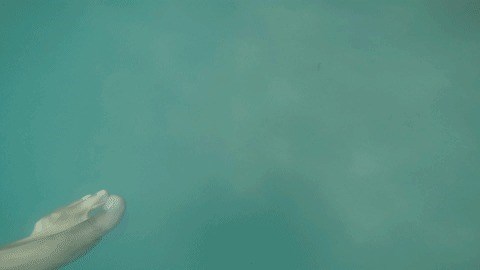Loving Father
Seahorses (Hippocampus sp.) are highly modified bony fishes found in the ocean. Other than having a head that looks almost like a horse (a common feature in the Sygnathid/pipefish family), they have prehensile tails, allowing them to grab onto sessile structures like seaweed and seagrass. They also use their tails to grab one another as part of their mating ritual.
Not too long ago, a video of a mating seahorse pair was shared in a blog entry. After having their swimming patterns synced up, the female seahorse will then transfer her eggs into the male seahorse’s pouch where the eggs will be fertilised. The father seahorse will then brood the fertilised eggs from one to six weeks!
During this internal brooding period, the father actually carries out gas exchange, salinity control, “feeding”, the removal of waste, and immunological protection, almost like a like a pregnant mammal! (Though father seahorses do all of these without an umbilical cord and the brooding pouch is unlike a placenta.)
When the baby seahorses finally hatch, that is when the father seahorse “gives birth” to about 2000 living baby seahorses! This method of reproduction, known as oviviparous, decreases mortality of seahorses in the embryonic stage (fertilised egg), where seahorse eggs in open water would be eaten up by other larger marine creatures.
A video of a father seahorse “giving birth”. We also see that the care the father gives to his progeny is only up to the giving birth part.
Earlier this year, a seahorse was found to be swimming above the sandy bottom of the swimming area in the Datai bay. Unfortunately, even though being terrible swimmers when compared to other marine bony fishes, only a short video clip of it was recorded.

A GIF of the lone, unidentified seahorse casually “hanging out” above sandy bottom in the Datai bay (about 2m deep).